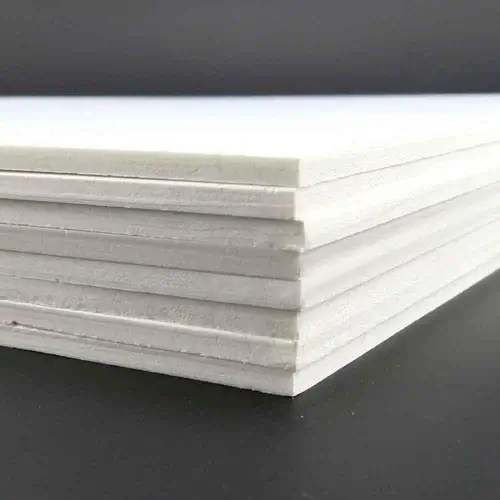In the diverse world of plastic materials, polyvinyl chloride foam board, commonly known as PVC foam board, is a particularly significant player. Many industries across the United Kingdom have embraced this versatile material, from sign-making to construction, due to its unique qualities. One question that often arises, however, is how strong is PVC foam board. This article aims to answer that question, exploring the strength of PVC foam board in the context of its uses.
What is PVC Foam Board?
PVC foam board is a lightweight yet rigid board made from polyvinyl chloride (PVC). This synthetic material is water-resistant, non-toxic and impressively durable. It has a smooth, matt finish that is receptive to multiple types of print, making it a favourite for signage and display manufacturing. However, its applications stretch well beyond that.
Mechanical Strength of PVC Foam Board
PVC foam board displays considerable mechanical strength, especially considering its light weight. Despite being softer and more flexible than other PVC products, it maintains a high degree of rigidity. This balance between rigidity and flexibility is one of the foam board’s most appealing attributes. Its strength isn’t compromised when cut, drilled, or shaped, making it a go-to material for applications demanding precision and stability.
For context, Simply Plastics – a well-established UK plastics company – often uses PVC foam board in various products because of its inherent strength and durability. This use in industry is a testament to the mechanical strength of the material.
Impact and Weather Resistance
One of the reasons behind PVC foam board’s strength lies in its excellent resistance to impact and weather conditions. The material can withstand harsh UV rays, rain, and fluctuating temperatures without losing its structure or visual appeal. This weather-resistant quality is particularly important in the UK, where weather can be unpredictable.
The board’s resilience to damage makes it ideal for outdoor applications, such as exterior signage and construction cladding. Moreover, its resistance to chemicals further adds to its strength, facilitating its use in industrial settings.
Compressive Strength of PVC Foam Board
An often-overlooked feature of PVC foam board is its impressive compressive strength. While it might be lightweight, it can resist substantial pressure without deforming or breaking. This strength is due to the closed-cell structure of the foam board that makes it highly resistant to compression.
This attribute is essential in applications where the material is subjected to load-bearing or heavy-duty scenarios, such as in building interiors or exhibition stands.
Fire Resistance
In terms of safety, the strength of PVC foam board extends to fire resistance. The material has a self-extinguishing quality, meaning it can hinder the spread of flames. While it’s not entirely fireproof, this feature provides an added layer of safety, particularly in public spaces where fire regulations are stringent.
The Verdict on PVC Foam Board Strength
PVC foam board, while lightweight, is undeniably a strong material. Its mechanical strength, coupled with resistance to impact, weather, and compression, makes it a remarkably durable choice. The material’s fire resistance further underscores its strength, offering an added safety factor.
In conclusion, PVC foam board has proven to be a reliable material in numerous applications across the UK, as demonstrated by its widespread use in industries from signage to construction. While its strength may not be apparent at first glance, a closer examination reveals a material that combines the best of flexibility, durability, and safety.

